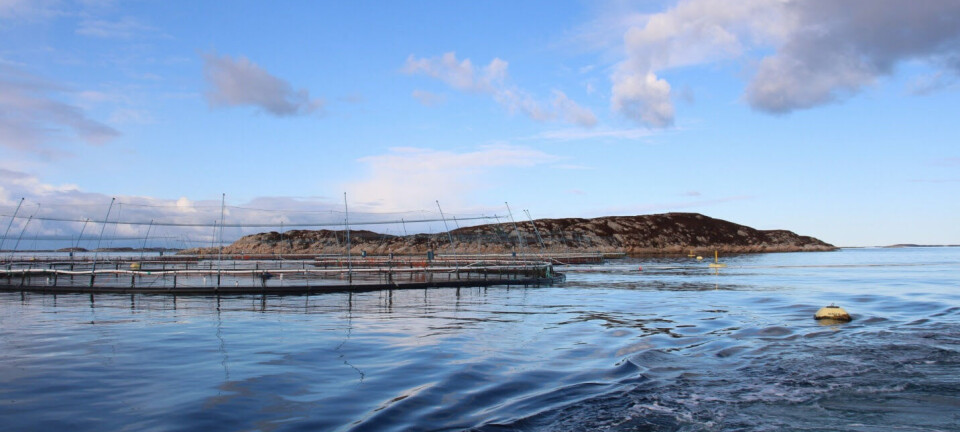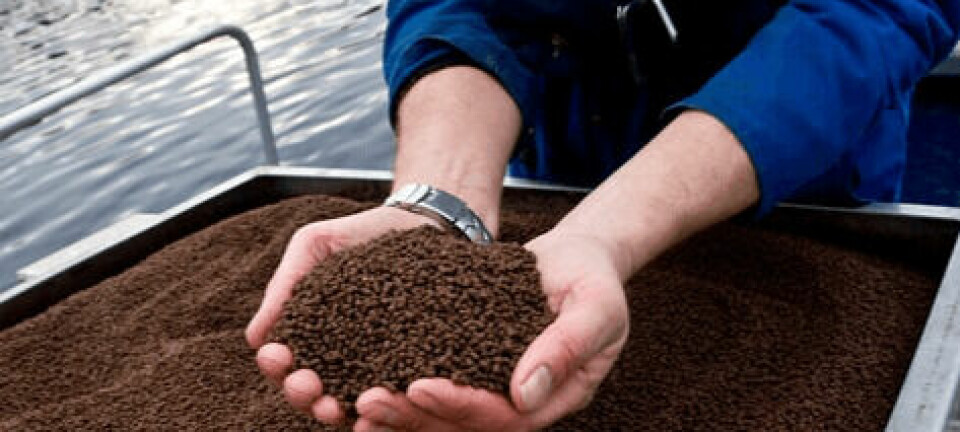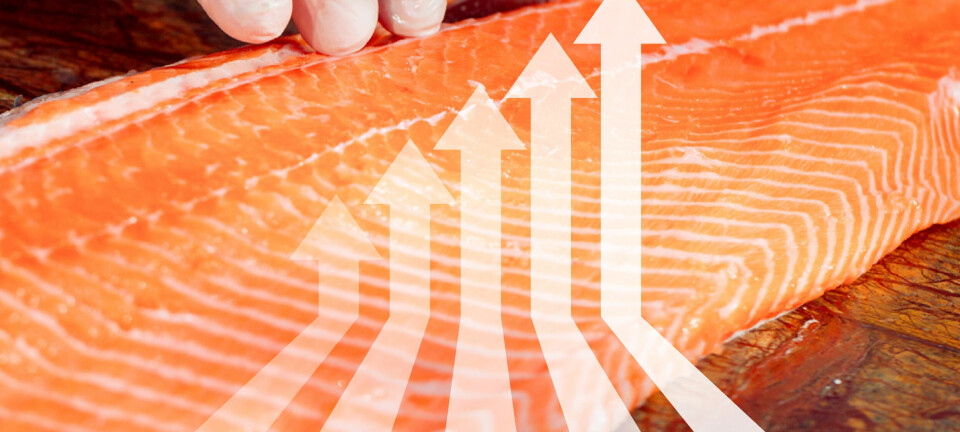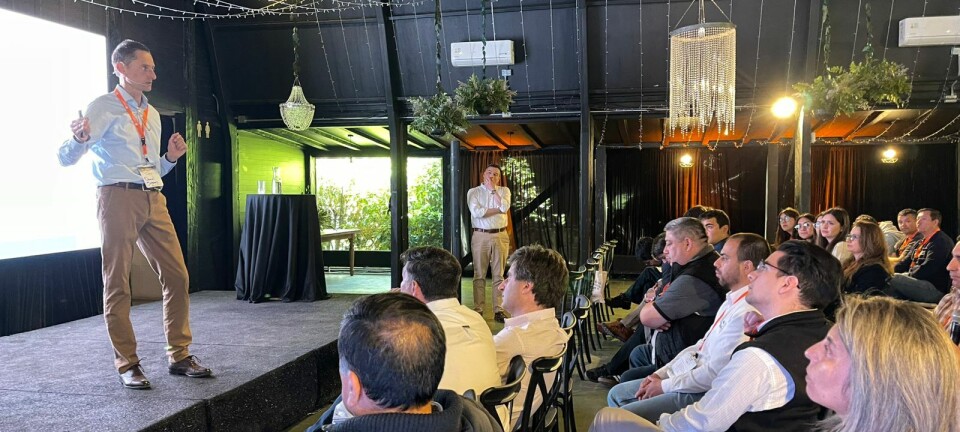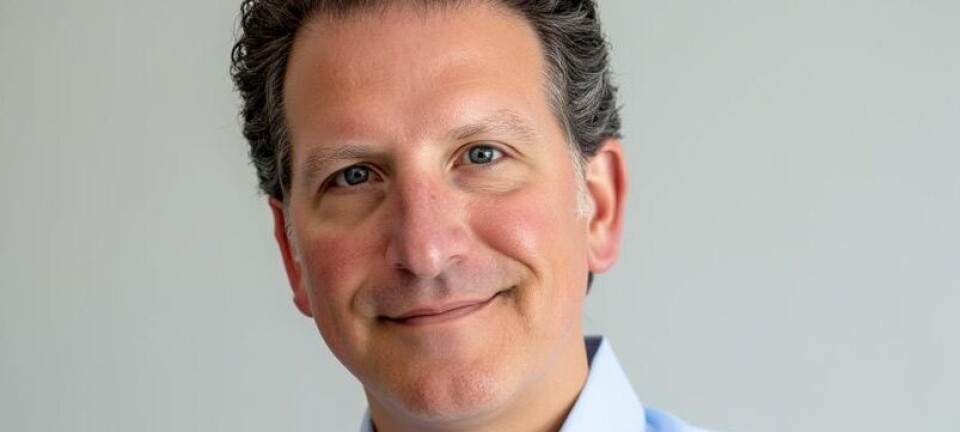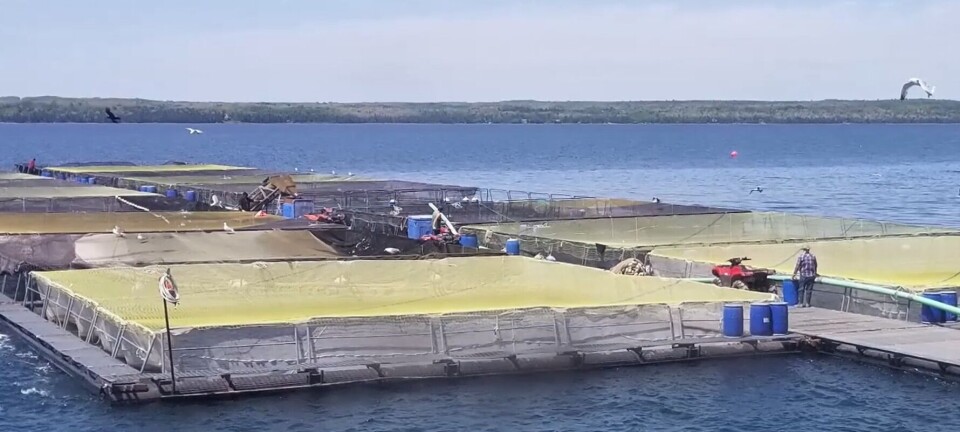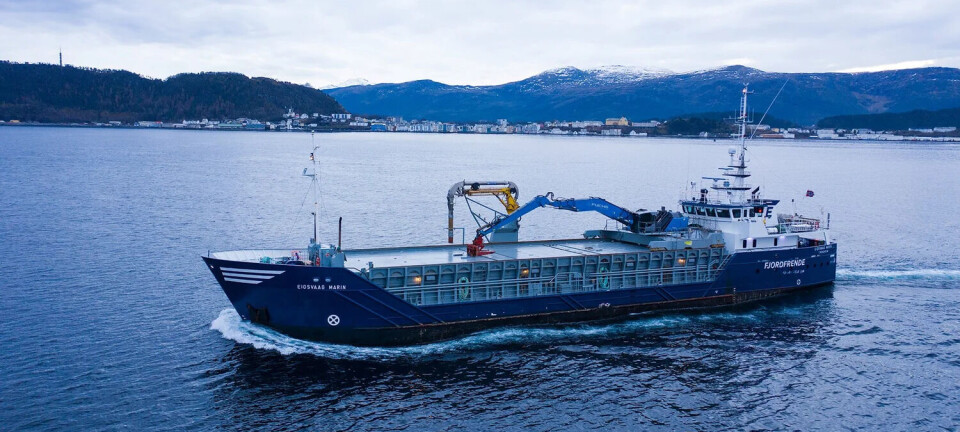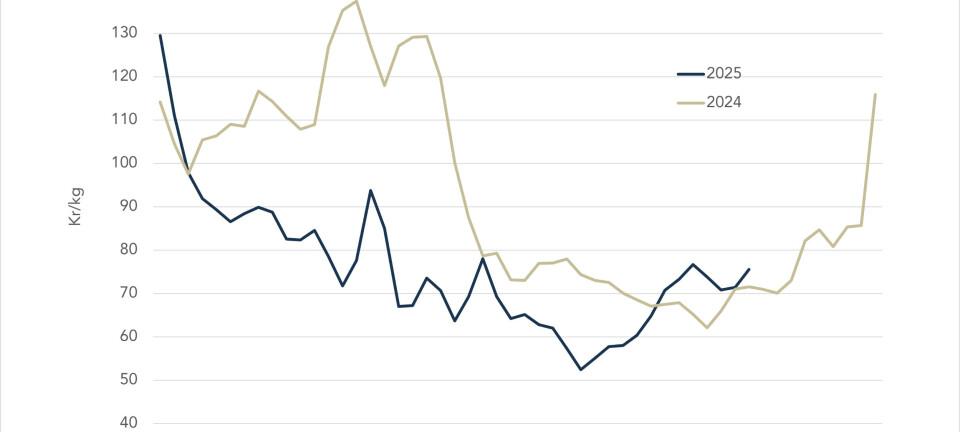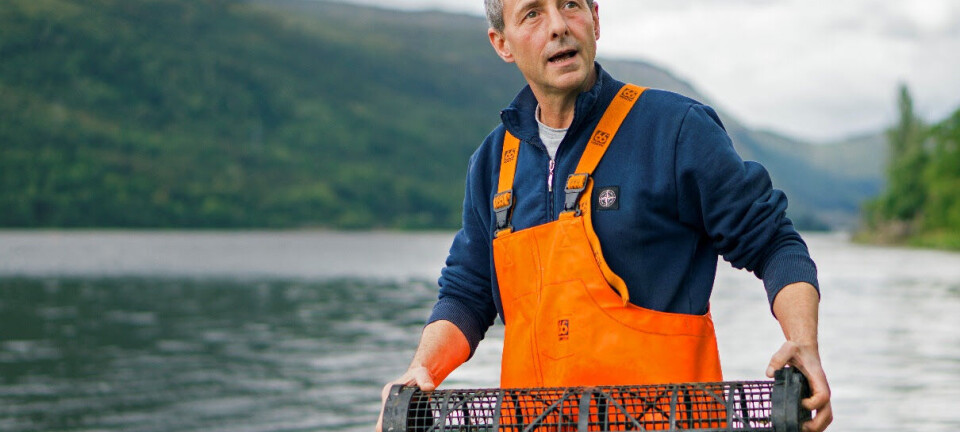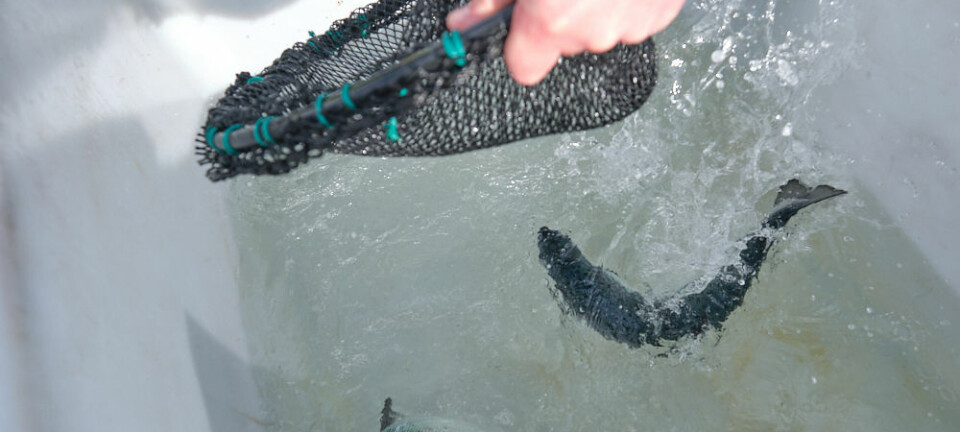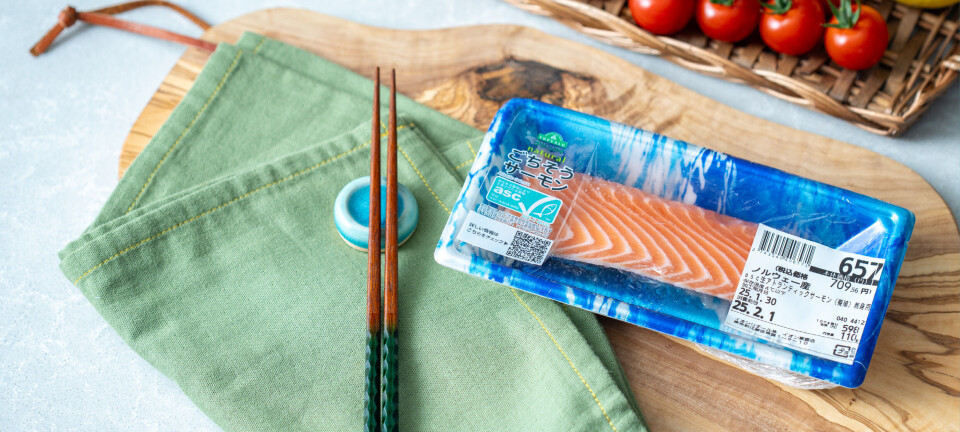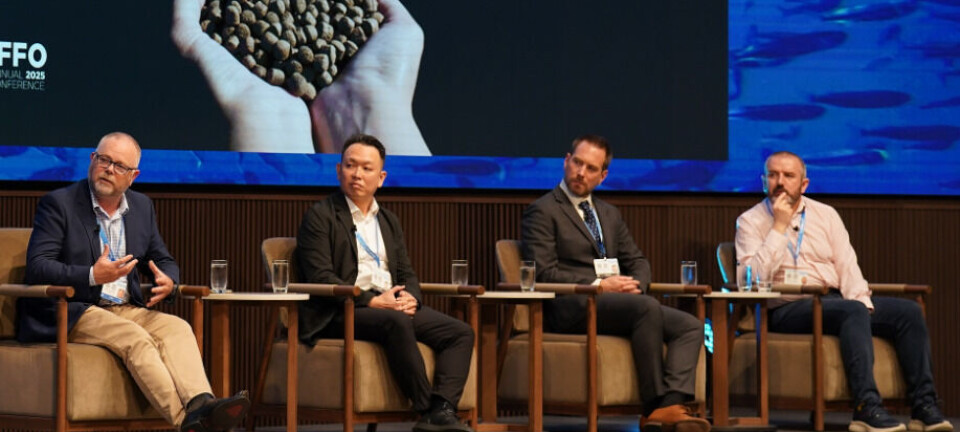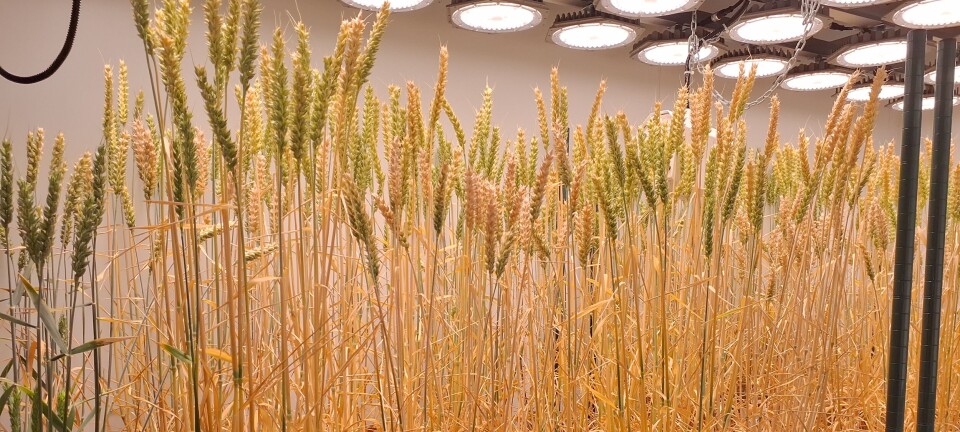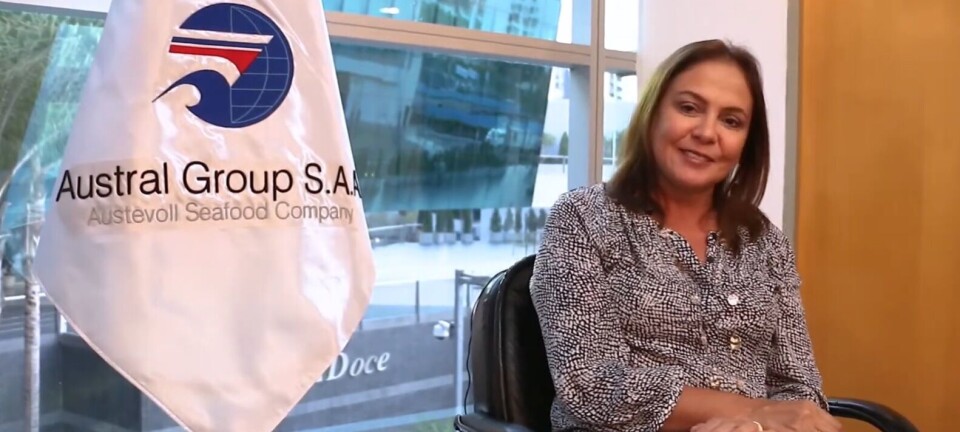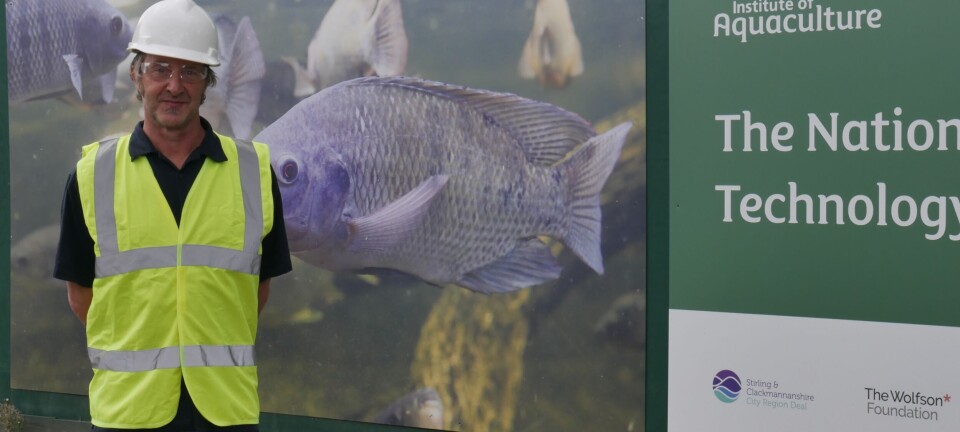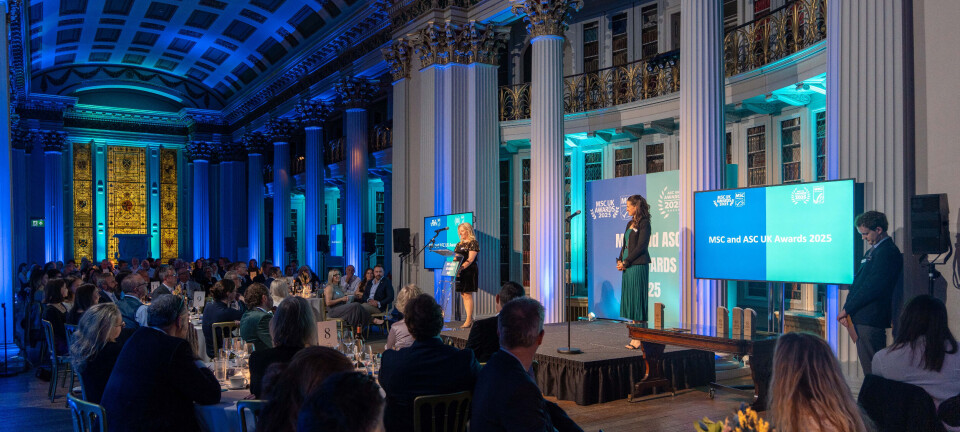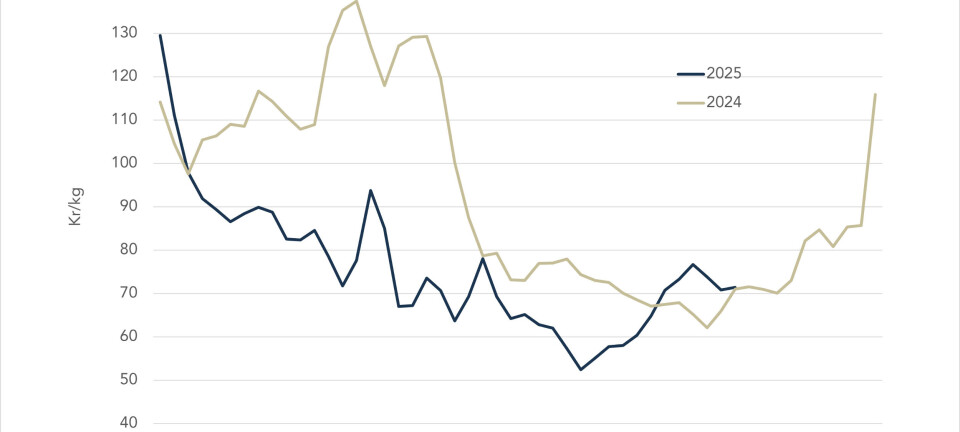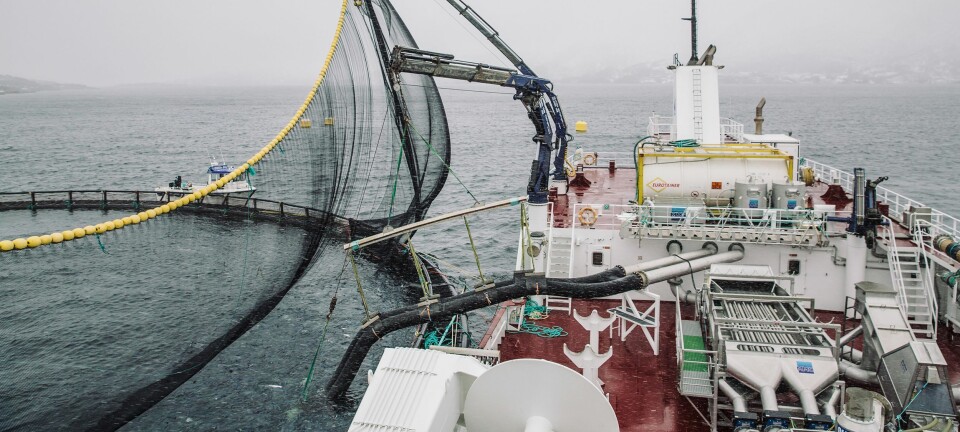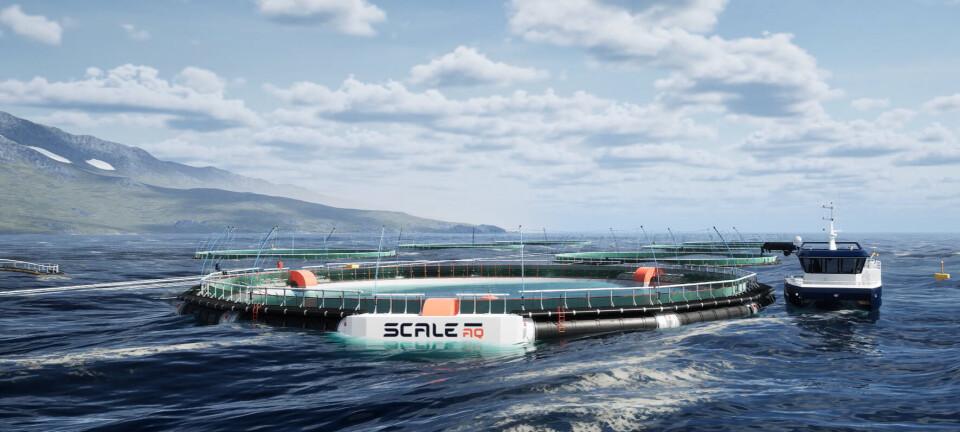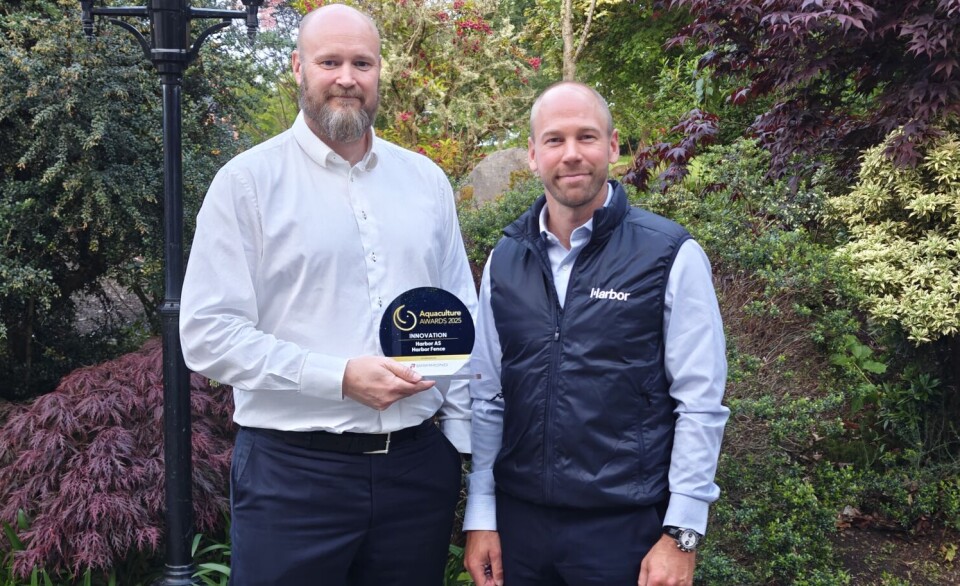
Electric fish fence maker switched on to Scottish potential
Aquaculture Awards winner says its technology can alleviate micro jellyfish challenges
An award-winning electric fence that protects farmed salmon from jellyfish stings and reduces sea lice larvae volumes will be tested in Scotland if the Norwegian maker can interest a fish farmer in the technology and get funding for a trial.
Harbor AS won the Innovation category for its Harbor Fence at the Aquaculture Awards presented in Inverness last week and sees Scotland as a promising market. Chief executive Christian Bjørnsen pointed out that Scotland is closer to the Stavanger-based company than fish farmers in northern Norway – and cheaper to fly to.
“If we get a phone call from one of the farmers saying come over, we want to talk and have this on a site, then we can deliver,” said the CEO.
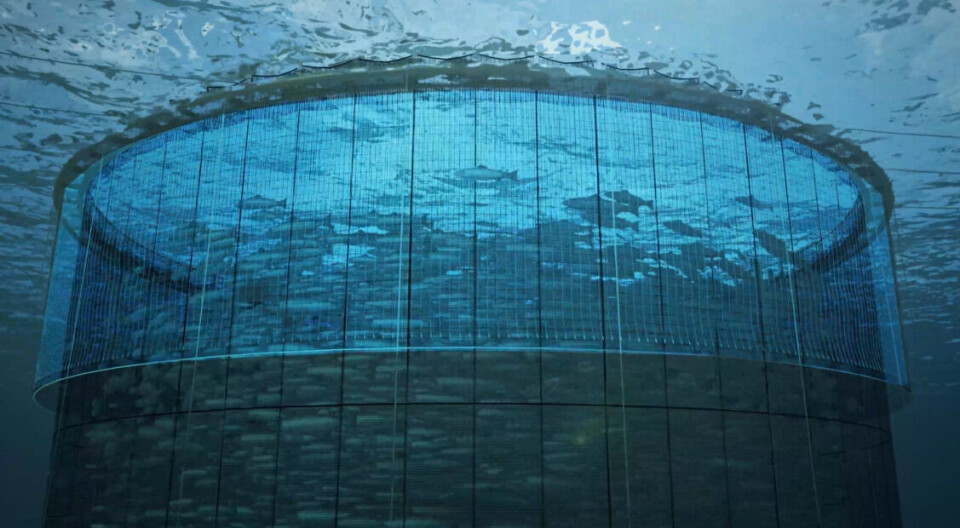
Bjørnsen said the award presented last Thursday was testament to the work that company had done in developing the Harbor Fence, and the efforts R&D manager Tarald Kleppa had made to show that the fence’s electric field triggers the stinging cells of the “barbed wire” jellyfish (Apolemia uvaria), rendering them harmless if the current pushes them into a salmon pen.
“I believe that the Aquaculture Awards jury sees this technology as something that can be really useful in Scotland for combatting the micro jellyfish that are plaguing the sea farms here,” added Bjørnsen.
Kleppa explained that Harbor had a hypothesis two years ago that its technology might trigger jellyfish stinging cells.
We’ve proven it with several R&D companies in Norway, and we’re quite keen on starting up an R&D pilot as well in Scotland
“Now we’ve proven it with several R&D companies in Norway, and we’re quite keen on starting up an R&D pilot as well in Scotland,” said Kleppa.
'We're in touch'
He said Harbor had collaborated with steelhead trout farmer Kames and salmon farmer Bakkafrost Scotland and had applied with the Sustainable Aquaculture Innovation Centre (SAIC) for government funding last year but were unsuccessful.
“But we are in touch, and both Bakkafrost and Kames are quite eager to test it. But we want to have the funding,” said Kleppa.
Bjørnsen explained that the company was financially sound after raising NOK 18 million in new equity but was not yet making money because each fish farmer who adopted the novel system was treating their first use as a pilot of the technology, even though its efficacy has been documented.
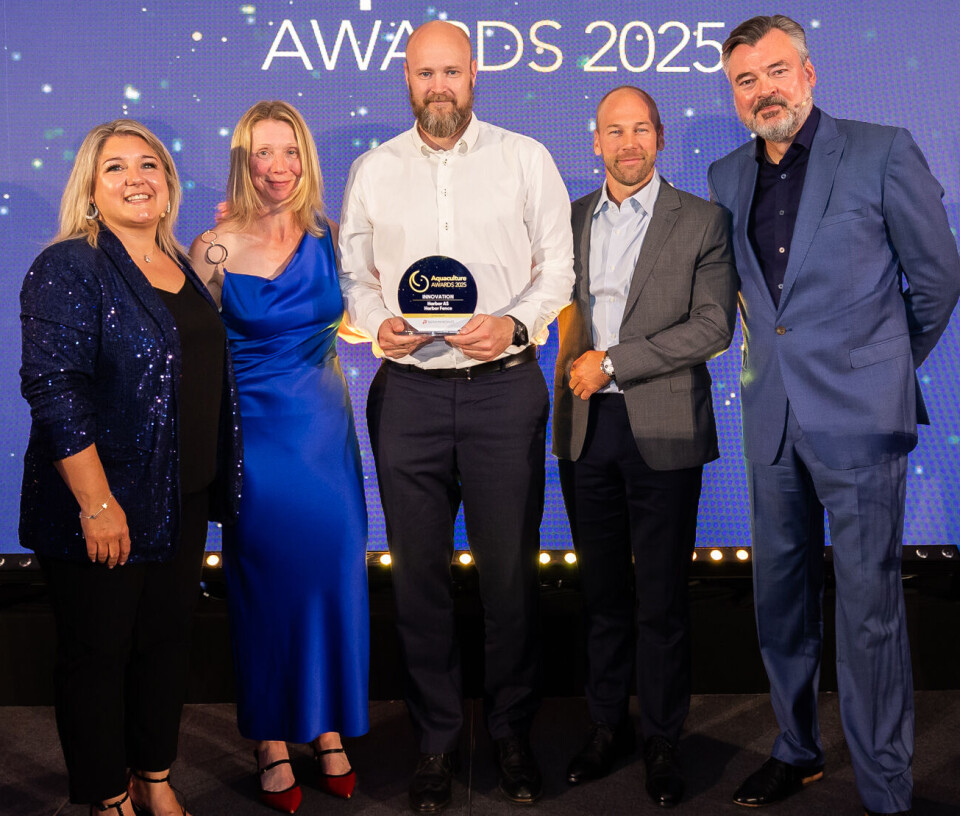
Not yet commercial rates
“They are paying us, but I would not call it commercial rates,” he said. “We have very good support from our shareholders, but obviously we need to get to the point where we can charge commercial prices from the salmon farmers. Once the salmon farmers see that it works, they have a good cashflow and so of course they should pay the commercial price.”
Version 3 is the latest iteration of the Harbor Fence, which is being improved as the company learns from experiences on farms.
“We have quite a few contracts starting up in the second half of this year for the version 3 fence, so by the end of the year we are estimating that we will have about 25 Harbor Fences in the sea,” said Bjørnsen.
Jellyfish and lice
The Harbor Fence was originally designed to combat lice, but is it proving to be more effective against jellyfish?
“It is proving to be effective against both,” Bjørnsen told Fish Farming Expert. “We are getting very exciting data from some of the fences that we have in the sea in Norway now and the first of version 3 goes into the ocean in a few weeks. This is going to have an even stronger electrical field. On the jellyfish, the effect seems to be 100% - if the jellyfish crosses through the electrical barrier, it is going to be fully discharged of all of its poison so it doesn’t present any poisonous danger for the fish.
“With the lice, we have proven in laboratory settings effectiveness of 60-80% in reducing the larvae, and our aim is to prove the same in the sea. Obviously, we are targeting the upper end of that range. If we can prove that we can have a reduction of 80% then that’s going to be by far the best system out there.
“That’s our goal. We are not there quite yet, but we are taking new steps every day. We’ve seen some exciting results with version 2.2, and we know that version 3.0 that we’re putting in the ocean now is even better.”
Part of a package
Kleppa said that the Harbor fence is a highly effective preventive mitigation, but the company also sees the benefit of using reactive technologies or cleaner fish inside the pen.
“We will reduce the total pressure, meaning we will reduce the copepods, but once inside the pen it could be beneficial to use Stingray (a lice laser), cleaner fish, etc.
“There are solutions that complement each other and make each other better.”






